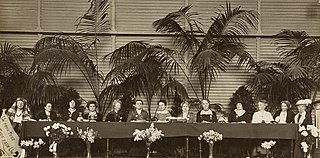Lucy Thoumaian: Difference between revisions
m Disambiguating links to Armenian (link changed to Armenia; link changed to Armenia) using DisamAssist. |
m Bot: fix deprecated Citation Style 1 parameters (Task 9) |
||
| Line 37: | Line 37: | ||
In 1915 Thoumaian traveled to [[The Hague]] where she represented Armenia at the [[Women at the Hague]] conference. She arrived at the conference on the 25 April 1915. The day before the [[Armenian Genocide]] started when hundreds of intellectuals were arrested in Armenia.<ref>{{cite book |
In 1915 Thoumaian traveled to [[The Hague]] where she represented Armenia at the [[Women at the Hague]] conference. She arrived at the conference on the 25 April 1915. The day before the [[Armenian Genocide]] started when hundreds of intellectuals were arrested in Armenia.<ref>{{cite book |
||
|first=Arshavir|last=Shirakian|authorlink=Arshavir Shirakian|others=translated by Shirakian, Sonia|title=Կտակն էր Նահատակներուն [Gdagn er Nahadagnerin]| |
|first=Arshavir|last=Shirakian|authorlink=Arshavir Shirakian|others=translated by Shirakian, Sonia|title=Կտակն էր Նահատակներուն [Gdagn er Nahadagnerin]|trans-title=The legacy: Memoirs of an Armenian Patriot|publisher=[[Hairenik Association|Hairenik Press]]|location=Boston|year=1976|oclc=4836363}}</ref> |
||
Thomanian was on the main panel at the conference. After the conference she stayed in the Netherlands until November. She was busy circulating material and she was desperate to get information on 30 relatives she last saw in Marsovan in Armenia.<ref name=":0">{{Cite web|url=http://wilpf.org/wp-content/uploads/2015/06/Lucy-Engl.pdf|title=Lucy Thoumaian|last=|first=|date=|website=WILPF|archive-url=|archive-date=|dead-url=|access-date=2 November 2017}}</ref> |
Thomanian was on the main panel at the conference. After the conference she stayed in the Netherlands until November. She was busy circulating material and she was desperate to get information on 30 relatives she last saw in Marsovan in Armenia.<ref name=":0">{{Cite web|url=http://wilpf.org/wp-content/uploads/2015/06/Lucy-Engl.pdf|title=Lucy Thoumaian|last=|first=|date=|website=WILPF|archive-url=|archive-date=|dead-url=|access-date=2 November 2017}}</ref> |
||
Revision as of 22:43, 15 November 2017
Lucy Thoumaian | |
|---|---|
 | |
| Born | 1890 |
| Died | 1940 |
| Nationality | Armenian |
| Known for | Pacifism, women's rights |
| Spouse | Rev. Prof. Thoumaian |
Lucy Thoumaian or Rossier de Visme (1890 – 1940) was an Armenian woman's rights and peace activist. Driven out of Armenia she helped create a school in Chigwell for orphaned Armenians. She published a manifesto for peace before she attended the Women at the Hague conference in 1915. Afterwords, she began working for the League of Nations.
Life
Thoumaian was born in Switzerland with the name Rossier de Visme.

She and her husband Reverend Professor Garabed Thoumanian were driven out of Armenia and they became exiles in Britain. There they organised an orphanage and school at Oakhurst[1] in Chigwell for Armenians in 1906.[2]
In 1911 she attended the First Universal Races Congress in London which was an early attempt at anti-racism. Despite being an exile from the Ottoman empire she had embraced the Turkish delegates as a symbol of the need to work togther.[3]
In 1914 she published a manifesto for peace whose theme was "War is man-made, it must be woman undone". She proposed that women should have weekly meetings until the dispute that caused the war was resolved.[4]
In 1915 Thoumaian traveled to The Hague where she represented Armenia at the Women at the Hague conference. She arrived at the conference on the 25 April 1915. The day before the Armenian Genocide started when hundreds of intellectuals were arrested in Armenia.[5]
Thomanian was on the main panel at the conference. After the conference she stayed in the Netherlands until November. She was busy circulating material and she was desperate to get information on 30 relatives she last saw in Marsovan in Armenia.[6]
After the war ended she was pushed forward by the WILPF to work for a League of Nations commission. She continued to work for justices for the victims of the genocide in Armenia.[6][7]
Thoumaian died in the United States of America in 1940.[2][6]
References
- ^ "Chigwell: Schools | British History Online". www.british-history.ac.uk. Retrieved 2017-11-02.
- ^ a b http://wilpf.org/wp-content/uploads/2015/06/Lucy-Engl.pdf
- ^ Maureen Moynagh; Nancy Forestell (14 January 2012). Documenting First Wave Feminisms: Volume 1: Transnational Collaborations and Crosscurrents. University of Toronto Press. pp. 397–. ISBN 978-1-4426-6410-4.
- ^ Jill Liddington (1989). The Road to Greenham Common: Feminism and Anti-militarism in Britain Since 1820. Syracuse University Press. pp. 91–. ISBN 978-0-8156-2539-1.
- ^ Shirakian, Arshavir (1976). Կտակն էր Նահատակներուն [Gdagn er Nahadagnerin] [The legacy: Memoirs of an Armenian Patriot]. translated by Shirakian, Sonia. Boston: Hairenik Press. OCLC 4836363.
- ^ a b c "Lucy Thoumaian" (PDF). WILPF. Retrieved 2 November 2017.
{{cite web}}: Cite has empty unknown parameter:|dead-url=(help) - ^ Archives, The National. "The Discovery Service". discovery.nationalarchives.gov.uk. Retrieved 2017-11-02.
